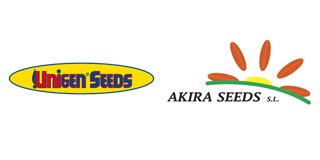
UNIGEN SEEDS SPAIN
Keeping fruit, vegetables and cut flowers fresh longer
New technology could cut billions of dollars of losses yearly from the silent, invisible killer of fruits, vegetables and cut flowers ? a gas whose effects are familiar to everyone who has seen bananas and other fruit ripen too quickly and rot. New technology offers the promise of reducing billions of dollars of losses that occur each year from the silent, invisible killer of fruits, vegetables and cut flowers ? a gas whose effects are familiar to everyone who has seen bananas and other fruit ripen too quickly and rot. That?s the
30 November, -0001
New technology could cut billions of dollars of losses yearly from the silent, invisible killer of fruits, vegetables and cut flowers ? a gas whose effects are familiar to everyone who has seen bananas and other fruit ripen too quickly and rot. New technology offers the promise of reducing billions of dollars of losses that occur each year from the silent, invisible killer of fruits, vegetables and cut flowers ? a gas whose effects are familiar to everyone who has seen bananas and other fruit ripen too quickly and rot. That?s the conclusion of an article in the ACS journal Chemical Reviews. Nicolas Keller, Marie-No?lle Ducamp, Didier Robert and Val?rie Keller explain that fruits, vegetables and flowers are still alive after harvest. They produce and release into the air ethylene gas, which fosters ripening and blooming. Ethylene is the basis of the household trick of speeding the ripening of green fruit by placing it in a sealed bag. When released into storage and shipping containers, however, ethylene causes unwanted ripening, spoilage and financial losses. As part of a worldwide effort to find better ways of controlling ethylene, Keller and colleagues reviewed almost 300 published studies and compared all existing ethylene control/removal methods and technologies. They concluded that photocatalysis offers the greatest potential for removing ethylene and preserving produce, both on Earth and during spaceflights. With the method that enters into the field of sustainable development, a catalyst and light act together to remove ethylene by transforming it into carbon dioxide and water. ?Worldwide food technology could take advantage of photocatalysis technology for providing health and economical benefits and for globally contributing to both increased food quality and availability by reducing postharvest losses of fresh produce,? the report states. ?Thus, through this multidisciplinary review, we hope to be successful in illustrating photocatalysis as a really promising technology, within a sustainable development approach, for replacing current ethylene removal technologies during the storage and the transfer of fresh fruits and vegetables,? they say. Sources: ACS NEWS SERVICE, Weekly Press Package - May 15, 2013 The first picture belongs to the May 15 ACS newsletter, and the 2nd picture is the ABSOGER ECOscrub. ? ? ? ? ? ? ? ? ? ?








